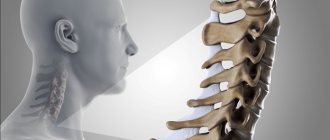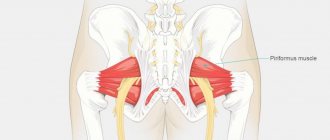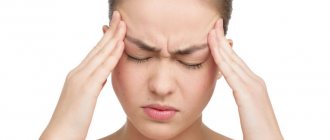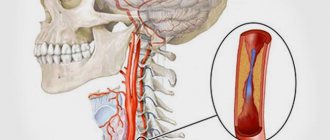general information
The shoulder joint is one of the most mobile in the body. The head of the humerus is spherical in shape, and the corresponding surface of the scapula is almost flat. The structure is additionally fixed by a strong articular capsule, numerous tendons and ligaments. As a result, a person can move his arm in any direction.
The cause of pain can be any of the elements of the joint apparatus, as well as nearby nerve bundles and muscles. The problem can also come from neighboring structures: the spinal column, heart, stomach, esophagus. Often, only a doctor can accurately determine the cause of pain in the shoulder joint of the arm and prescribe the correct treatment.
Make an appointment
Causes of pain
Pain in the shoulder joint can occur due to various reasons, the most common of which are:
- sedentary lifestyle;
- excess body weight;
- excessive load on the joint apparatus (heavy lifting, vibration, professional sports);
- incorrect posture;
- previous injuries and joint surgeries;
- age over 50 years (tissue regeneration worsens, especially cartilage);
- infectious and autoimmune lesions;
- metabolic disorders;
- disruption of the endocrine glands, as well as sudden hormonal changes (pregnancy, menopause);
- hereditary predisposition to diseases of the musculoskeletal system.
These unfavorable factors cause the development of certain pathologies, which, in turn, cause shoulder pain.
Causes
There are two types of situations in which pain in the shoulders and cervical spine may occur. Namely:
- Changes concerning the anatomical part.
- Pathological processes in organs, due to which pain radiates to the neck and shoulders.
In the first case, pain occurs because muscles, bones, blood vessels, ligaments and other parts of the musculoskeletal system are affected. Such pathologies can spread to neighboring organs and tissues, forming a general clinical picture. In the second case, heart or gallbladder disease could occur. Often, among the symptoms of diseases of these organs, pain radiates to the shoulders and neck. Sometimes the situation is so serious that the person needs to be hospitalized immediately.
Pathologies of the shoulders and neck
The collar area includes the muscle tissue located in the neck, bone structures, the canal in which the spinal cord passes, and the shoulder joints. The most important and largest muscle here is the trapezius, the branches of which are in the neck and reach nearby organs. In addition, there are a lot of nerve processes and vessels through which blood passes. A disease of any structure can provoke severe pain, and a person will have to think carefully about what it is like when his shoulders and neck hurt.
Muscular sections
Painful sensations associated with muscles in such a situation usually appear in people who have been in an uncomfortable position for a long time and lead a sedentary lifestyle. We often encounter this problem:
- programmers;
- office workers;
- artists;
- scientists, etc.
If your neck and shoulder hurt on the right or left due to being in one position for a long time, then there is no talk of any serious treatment methods. It is enough to warm up properly, take a walk, take a warm shower, and you can forget about the pain.
Intervertebral cartilage
If the problem is that the pain is associated with the cartilage tissue between the vertebrae, then most likely we are talking about osteochondrosis. This unpleasant disease leads to pain in the neck and shoulder on the right or left side, pain spreading to the arms, back and sternum. The disease does not manifest itself for a long time, and acute symptoms arise only when the intervertebral discs begin to deteriorate, become thinner and the distance between the vertebrae decreases, which is why the nerve endings are pinched. It is important to consult a doctor on time, even if the pain is minor.
Shoulder joint
Neck and shoulder pain on the right or left side is often due to the fact that the shoulder joint is affected. It is usually affected by arthritis or periarthritis (which is an inflammation of the joint that does not affect its capsule). Sometimes you may encounter rheumatoid arthritis when the disease affects the intervertebral joints. In this case, there is severe redness of the skin, an increase in its temperature, as well as a sharp limitation in the mobility of the affected area. Remember that when it comes to the spine, you should not hesitate to visit a doctor, as the disease can be serious. Some diseases in the later stages cannot be treated; a person loses the ability to even care for himself and becomes severely disabled.
Spinal artery
Treatment of a condition where shoulder and neck pain can be complicated by the fact that for a long time it is not possible to determine the cause of the discomfort. In addition, they are joined by symptoms that seem to have nothing to do with shoulder pain:
- fainting;
- noise in ears;
- decreased visual acuity;
- headache.
In such a situation, the doctor may suspect you have vertebral artery syndrome. The diagnosis of “vegetative-vascular dystonia” is often mistakenly made, but in this case treatment does not bring the long-awaited improvement in well-being.
Possible diseases
Pain in the shoulder joint can be caused by diseases of the musculoskeletal system, nervous and cardiovascular systems, cancer and other processes.
Arthritis
One of the most common causes of shoulder pain. The disease is associated with the development of an active inflammatory process in the shoulder joint, which is accompanied by:
- severe pain syndrome;
- increased temperature and swelling of the affected area;
- redness of the skin over the sore joint.
Pathology occurs against the background of trauma, infectious diseases, hypothermia, high physical activity, allergic and autoimmune reactions. Depending on the duration and severity of symptoms, it can be acute or chronic.
Arthrosis
Arthrosis of the shoulder joint is a chronic degenerative disease in which the gradual destruction of cartilage tissue occurs. As a result, the contacting areas of the bones lose their smoothness. Increased friction during movement causes pain, which gradually increases as the disease progresses. Subsequently, bone growths (osteophytes) form inside the joint cavity, the bones themselves are deformed, and movements are almost completely blocked. In addition to pain, the disease manifests itself as stiffness of the affected joint and a characteristic rough crunch.
Bursitis
Bursitis is an inflammatory disease in which fluid accumulates inside the joint capsule. Most often occurs against the background of trauma. Pathology manifests itself:
- acute pain during movement and less severe at rest;
- increased body temperature (in mild cases, only the area of the affected joint becomes hot);
- pronounced swelling, when pressed on, the movement of fluid inside the limited cavity is clearly felt.
Capsulitis
Chronic inflammation of the capsule surrounding and stabilizing the joint. The second name is “frozen shoulder syndrome”. As a result of a long pathological process, the capsule contracts, and the surrounding ligaments partially atrophy. The pain usually occurs at night, and the disease itself has a wave-like character and either worsens or subsides. After active inflammation subsides, a person feels a pronounced difficulty in movements, especially outward rotation of the arm.
Humeroscapular periatritis
The inflammatory process affects the tissues surrounding the shoulder joint, resulting in severe pain that intensifies with movement. A person cannot raise his arm up and put it behind his back. As the process enters the chronic phase, noticeable stiffness is noted.
Tendinitis
Inflammation of the tendon - tendonitis - occurs against the background of significant physical overload of the shoulder area. Depending on the severity of the pathological process, pain is provoked by physical activity or occurs at rest. The lesion can involve various tendons, which determines the symptoms.
Osteochondrosis of the cervical spine
The disease is associated with flattening of the intervertebral discs, resulting in pinched nerve endings. The intensity of pain depends on the degree of damage, often intensifying when turning and tilting the head. The process may also be accompanied by numbness of the hand and sharp “shots”. Often the pain spreads to other parts of the body.
Ligamentous calcification
The disease is associated with the deposition of calcium salts in the tissues of the ligaments. The exact reasons have not yet been studied. The process causes intense pain during movement and at rest.
Brachial neuritis and brachial plexitis
Damage to the brachial nerve or nerve plexus in this area usually occurs due to injury, hypothermia, or an infectious disease. The pain affects not only the shoulder, but the entire arm, often accompanied by numbness, burning, and the feeling of goosebumps running across the skin. In severe cases, paralysis of individual muscles may develop.
Tumors
Pathological formations in the shoulder area appear quite rarely. As they grow, they compress surrounding tissue. As a result, the patient first experiences discomfort and a sensation of a foreign body in this area, and then pain of varying degrees of intensity.
Diseases of internal organs
Of all the non-musculoskeletal conditions that cause shoulder pain, myocardial infarction is the most dangerous. The pain is usually of a squeezing or burning nature and appears first in the chest area or between the shoulder blades, and then spreads wider, including to the left shoulder, arm, left half of the neck and face. Pathology is usually accompanied by:
- severe weakness;
- sweating;
- dizziness;
- feeling of lack of air;
- fear.
This condition is fatal and requires emergency medical attention.
If the cause of the problem is acute cholecystitis or cholelithiasis, the pain will begin in the solar plexus and radiate to the right shoulder. The attack often occurs against the background of overeating and is accompanied by nausea and vomiting.
Injuries
Bruises, sprains, ruptures and tears of ligaments, joint dislocations, bone fractures inevitably cause acute pain. Depending on the type of lesion, it may be accompanied by:
- limited mobility;
- visual deformation of the joint;
- hematoma formation;
- pathological mobility of bones and crunching of fragments.
The diagnosis is usually not in doubt, since the patient himself clearly associates the occurrence of pain with injury.
Causes of pain in the shoulder joint
Traumatic injuries
Pain in the joint is a consequence of falling on your arm, twisting your shoulder, or a sharp jerk or blow.
Occurs due to household, street and sports injuries. Less commonly formed in industrial accidents, falls from heights, and road traffic accidents. Swelling is noted, bruising and abrasions are possible. A bruise of the shoulder joint develops upon impact. The pain at the time of injury is moderate and subsides fairly quickly. Swelling is moderate or insignificant, limb function is preserved, limited due to pain. A dislocation occurs when you fall on a straight arm or get hit. There is a very sharp pain combined with a clicking sound. High pain intensity persists until reduction. The shoulder joint is deformed, and there is a depression at the site of the humeral head. Movement is impossible.
A fracture of the head or neck of the humerus, or separation of the greater tubercle, occurs with an impact or fall on the shoulder. Intense explosive pain is typical, sometimes a bone crunch is heard. The pain does not subside over time. To avoid increased pain, the patient holds the sore arm with the healthy one. Severe swelling, diffuse cyanosis are detected, deformation, pathological mobility, and crepitus are possible. Movements are severely limited.
Tears and tears of the rotator cuff are accompanied by sharp pain radiating to the neck, forearm, and hand. Depending on which muscle is affected, the pain intensifies when trying to lift, abduct or rotate the arm. If movement is impossible, this indicates a complete rupture of the tendon; if it is possible, but sharply painful, this indicates a partial rupture.
Soft tissue diseases
Bankart injury occurs in the long-term period after anterior shoulder dislocations and is characterized by severe tugging, burning or cutting pain when trying to move the arm back, combined with a feeling of instability of the joint, a conscious limitation of movements for fear of re-dislocation.
Tendopathies develop in other diseases of the shoulder joint, after injuries. Initially, they are characterized by short-term pain at the peak of the load. Then aching or nagging pains begin to bother you with moderate and light exertion, at rest, at night. With calcific tendinosis, a crunching sound is heard during movement.
With adhesive capsulitis, the pain syndrome appears without connection with external causes, gradually increases over 2-4 weeks, intensifies at night, when lying on the sore shoulder. The pain is chronic, constant, exhausting, preventing any movements, including passive ones. Pain gradually decreases and disappears within 10-14 months along with a progressive limitation of range of motion.
Acute myalgia of the deltoid muscle develops against the background of injury, infection, significant physical activity, and exogenous intoxication. Accompanied by local aching, pressing, bursting pain. The pain increases sharply with muscle tension, forcing the patient to search for a comfortable position of the limb.
Degenerative joint lesions
Arthrosis of the shoulder joint is characterized by chronic diffuse pain with a predominant localization in the depths of the joint. At first, the pain is periodic, not intense, dull, aching, pulling, and appears at the beginning of movements, after significant exertion. Subsequently, the pain becomes longer lasting, sometimes burning, tugging, or encircling. They persist at rest, occur at night, are accompanied by a crunching sound, and are combined with increasing limitation of mobility.
With arthrosis of the acromial clavicular joint, pain is felt above the shoulder joint, in the distal part of the shoulder girdle. The pain is chronic, has the same dynamics as with arthrosis of the shoulder joint, but is distinguished by a clear localization and more superficial location, intensified by pressing on the acromial end of the clavicle, bringing the bent shoulder towards the body.
Synovial chondromatosis occurs after injury or without external causes, and is characterized by wave-like dull pain of moderate intensity, often worsening at night. Short-term severe shooting pains and sudden restrictions of movements are possible due to blockade of the joint by chondromic bodies.
Aseptic necrosis of the humeral head (Hass disease) is rare; at the initial stage it manifests itself as intermittent dull pulling or pressing pain during movements. Over the course of about a year, the duration and intensity of the pain gradually increases, then the pain appears at rest, and the function of the limb is limited.
Inflammation of hard structures
With arthritis of the shoulder joint, the pain is diffuse, dull, nagging, and occurs after an injury, against the background of an infectious or rheumatic disease. At first, the pain is weak, intermittent, intensifying in the evening, after physical activity. Then - long-term, medium intensity, remaining at rest. When infected, the pain becomes sharp, jerking, shooting, pulsating, and is combined with symptoms of general intoxication.
Hematogenous osteomyelitis usually occurs in childhood, affects the upper parts of the humerus, is manifested by local bursting, tearing, boring pain, which quickly intensifies to unbearable, combined with symptoms of intoxication, chills, and a sharp deterioration in general condition. With post-traumatic osteomyelitis, the clinical manifestations are similar, but develop more slowly and occur against the background of open fractures.
Inflammatory diseases of soft tissues
Acute aseptic bursitis of the shoulder joint is manifested by moderately severe arching diffuse dull pain, swelling, and slight hyperemia. When transitioning to a chronic form, the pain decreases; with the development of infectious bursitis, it intensifies, becomes sharp, twitching, pulsating, deprives you of night sleep, and is combined with an increase in edema, hyperemia, increased body temperature, and signs of general intoxication.
Tendonitis forms after tears of the rotator cuff or due to overload. The patient experiences pain when trying to move the arm to the side (damage to the supraspinatus muscle), turn the shoulder outward (inflammation of the infraspinatus or teres minor muscle), or place the arm behind the back (subscapularis tendinitis). The pain is moderate or not intense, aching or nagging.
Synovitis is a complication of injuries and other diseases of the joint, characterized by a dull arching pain that gradually intensifies over several days, correlating with an increase in the volume of the joint (amount of fluid). When the effusion suppurates, the pain is acute, twitching, intense, exhausting, accompanied by disturbances in the general condition.
Autoimmune pathologies
In rheumatoid arthritis, both joints are often involved. The mild form is characterized by intermittent weak pain of a pulling or pressing nature and morning stiffness. Moderate activity of the autoimmune process is manifested by periodic, prolonged dull, pressing, aching or bursting pain at rest and during movement, and prolonged stiffness. In the severe form, diffuse wave-like intense pain is observed, intensifying at night, constant stiffness, persistent synovitis, weakness, and hyperthermia.
With systemic lupus erythematosus, pain in the shoulder joints is often symmetrical, although unilateral damage is possible. In mild cases, the pain is dull, local, pulling or aching, and quickly disappears. In severe cases, the pain is progressive, wavy, diffuse, disrupting night sleep, combined with swelling, redness, and synovitis. Lesions of the skin and internal organs are noted.
Rheumatism is manifested by severe but short-term migrating pain in the shoulder and other joints, which occurs 1-2 weeks after an acute infectious disease. Variability is typical - the pain can be throbbing, burning, baking or dull, pressing, pulling. They persist for several days, then disappear or sharply weaken.
Tumors
Benign tumors (non-ossifying fibromas, osteochondromas, chondromas) have a long-term course, are asymptomatic, and are characterized by intermittent, low-intensity local pain, which remains at approximately the same level for many months or years. As neoplasia increases, synovitis occurs and a hard lump is felt in the joint area.
With malignant neoplasia, the pain is initially dull, vague, fuzzy, dim, and sometimes intensifies at night. The pain quickly progresses, becoming diffuse, sharp, bursting, burning, tugging, cutting. Accompanied by swelling, deformation, and general impairment. At an advanced stage, the pain is unbearable, exhausting, and can only be relieved with narcotic analgesics.
Neurological causes
Pain in the shoulder joint is often caused by pathology of the cervical spine. Typical are “lumbago” – sudden sharp pain that often radiates throughout the arm, from the shoulder to the fingertips. There may be mild pain spreading from the neck to the shoulder. A distinctive feature of the pain syndrome is the preservation of range of motion. Possible neurological causes of pain associated with damage to the spinal column:
- osteochondrosis;
- disc herniation;
- spondylitis;
- spondyloarthrosis;
- spondylosis deformans;
- spinal stenosis.
Pain in the shoulder joint, shoulder girdle, and upper arm can be caused by superior plexitis (Duchenne-Erb palsy). One-sided shooting pain is observed with pressure on the supraclavicular and subclavian areas, limitation of movements, and sensory disturbances.
Other reasons
In diseases of the internal organs, referred pain occurs in the shoulder joint due to the presence of myofascial trigger points. The following pathologies cause pain:
- cardiovascular system: ischemic heart disease, pericarditis;
- chest organs: pneumonia, pleurisy, mediastinal tumors, Pancoast cancer;
- abdominal organs: gastric and duodenal ulcers, cholecystitis, cholangitis, hepatitis, cirrhosis, fatty hepatosis.
Pain in the shoulder joint sometimes occurs with depression and some mental disorders. In diabetes mellitus, it has an organic basis due to the increased likelihood of developing tendinitis, capsulitis, and other minor rheumatological diseases. It can be provoked by taking anabolic steroids (due to necrosis of the clavicle and acromion process), corticosteroid drugs (due to necrosis of the humeral head).
Nature of pain
Understanding the nature of pain and the ability to describe it will be useful to everyone, since the quality and speed of diagnosis depends on this. Often, just by the characteristics of the sensations, the doctor can assume the presence of one or another pathology. The pain may be:
- acute: occurs abruptly and, often unexpectedly, usually has a shooting character and has high intensity; often occurs against the background of injury, pinching of the intervertebral nerve;
- aching: the intensity of the sensations is low, often they are of a pulling nature; the symptom often accompanies chronic diseases (arthrosis) and inflammatory processes (arthritis, bursitis, glenohumeral periarthritis, etc.) during the recovery period;
- associated with movement: characteristic of most pathologies of the shoulder joint and surrounding muscles; It is important to note which movements cause increased pain, as this helps to make the correct diagnosis;
- reflected: the epicenter of sensations is not located in the shoulder area, a wave of pain also affects this area; the symptom is characteristic of cardiovascular pathology: angina pectoris, myocardial infarction, as well as cholelithiasis, pleurisy, pancreatitis;
- shooting, pulsating: sharp pain impulses are characteristic of damage to the spinal roots, muscle spasms, etc.;
- constant: sensations do not go away either day or night, while movements can intensify them; characteristic of inflammatory processes.
In addition to describing the nature of the pain, it is important to tell the doctor about the accompanying sensations. Thus, nerve damage is often accompanied by burning and tingling, loss of sensitivity, etc.
Diagnostics
To determine the reason why a person has shoulder pain, the doctor uses the following methods:
- survey: identifying the nature and intensity of pain, the circumstances of its occurrence, the presence of concomitant diseases, etc.;
- examination: the doctor assesses the range of motion in the joint, the color and temperature of the skin, the presence of swelling, limitations in movement, etc.; a neurologist evaluates tissue sensitivity, muscle strength, and quality of reflexes;
- X-ray and CT: pictures and tomograms make it possible to assess the condition of bone tissue and partly cartilage; this is an indispensable method for diagnosing arthrosis, dislocations, cracks and fractures of bones, osteochondrosis of the spine;
- MRI: magnetic resonance imaging allows you to see the condition of not only bones, but also soft tissues, making virtual sections in specified planes;
- Ultrasound: ultrasound examination of the shoulder joint area allows you to see foci of inflammation, accumulation of fluid in the joint capsule, abscesses and neoplasms;
- laboratory diagnostics: a general blood test provides information about the presence of inflammation or allergies; if rheumatoid arthritis is suspected, a test for C-reactive protein, etc. is taken;
- joint puncture: a diagnostic puncture of the joint capsule, through which an analysis of the synovial fluid is taken or arthroscopy is performed (inspection of the joint from the inside using a miniature camera);
- electromyography: assessment of the efficiency of muscle fibers.
If necessary, consultations with narrow specialists and additional examination methods are prescribed: electrocardiogram, ultrasound of the abdominal organs, etc.
Shoulder Pain Treatment
Treatment for shoulder pain depends on its cause. If the problem is related specifically to the musculoskeletal system, painkillers come first:
- non-steroidal anti-inflammatory drugs in the form of injections, tablets and capsules, ointments and creams, patches, rectal suppositories; necessary for quickly stopping the inflammatory process and relieving pain;
- glucocorticosteroids: used in the form of tablets and injections, including for intra-articular administration;
- muscle relaxants: used to relieve muscle spasms in arthrosis, osteochondrosis and other pathologies;
- warming agents in the form of ointments: improve blood circulation in the affected area.
Depending on the cause of the pain, the doctor may prescribe:
- antibiotics (for inflammatory diseases);
- chondroprotectors (for arthrosis);
- B vitamins (for neurological pathologies), etc.
In acute processes and injuries, an important therapeutic factor is hand immobilization. Special bandages and orthoses reduce the range of motion and allow the tissues to fully recover. After active inflammation subsides, a variety of physiotherapy procedures are prescribed:
- magnetic therapy: exposure of the affected area to magnetic waves;
- shock wave therapy: destruction of pathological bone growths by sound waves of a certain length;
- ozone therapy: injection of a special gas mixture into the joint;
- electromyostimulation: exposure of muscles to electrical impulses to cause them to contract;
- ultraphonophoresis and electrophoresis: saturation of tissues with drugs using ultrasound or electric current;
- laser therapy: deep heating of tissues with a laser beam.
These techniques are aimed at improving microcirculation in tissues and stimulating regeneration processes.
Additionally used:
- physical therapy and mechanotherapy;
- massage;
- traction of joints to minimize stress.
If indicated, surgical treatment is used:
- puncture of the joint with removal of pathological contents (fluid, pus, blood);
- restoration of the integrity of bones or ligaments after injury;
- endoprosthetics: replacement of a joint with an artificial one for advanced osteoarthritis;
- removal of tumors.
Make an appointment
Principles of treatment
Treatment involves the use of conservative therapy and physiotherapy. If conservative treatment does not bring the desired results, surgical intervention is prescribed.
Medications are used to relieve pain and stop the inflammatory process, and restore cartilage tissue.
Effective methods for treating shoulder pain are:
- magnetic therapy;
- phonophoresis;
- electrophoresis;
- UHF;
- manual therapy;
- acupuncture;
- massage;
- therapeutic exercises;
- kinesiotherapy;
- balneology;
- ozokerite;
- cryotherapy.
Possible consequences
The consequences of shoulder pain depend on its cause. Without examination and treatment, damage to the musculoskeletal system and nerves can lead to:
- limited mobility due to arthrosis;
- transition of inflammation to bone tissue (osteomyelitis);
- loss of sensation and motor function;
- severe deformation of a limb, etc.
If a person has a myocardial infarction, cholelithiasis, or pancreatitis, the consequences can be much more serious, including death. It is important to consult a doctor in time, and not use folk remedies.
Treatment methods
What to do and how to treat if your shoulders and neck hurt a lot? Once the diagnosis is made, the person will be prescribed adequate treatment, which will include medication, exercises for shoulder and neck pain, and physical therapy.
Medicines
Everything will depend entirely on what disease led to pain in the neck and shoulders. You may be assigned:
- chondroprotectors that improve blood flow - “Teraflex” and the like;
- anti-inflammatory drugs that will remove swelling - Meloxicam, Indomethacin;
- painkillers – “Analgin”, “Baralgin”;
- antispasmodic medications - “Mydocalm”, etc.;
- local preparations - ointments that anesthetize the affected areas, improve blood circulation and relieve inflammation - Voltaren, Diclofenac, etc.
In addition to drug therapy, physical therapy is prescribed.
Prevention
Prevention of shoulder pain is, first of all, prevention of diseases of the musculoskeletal system. It includes:
- dosed physical activity without striving for records;
- elimination or minimization of occupational hazards;
- wearing the right shoes;
- posture correction;
- sleeping on an orthopedic mattress and orthopedic pillow;
- normalization of body weight;
- proper nutrition with a minimum of harmful foods (alcohol, carbonated drinks, excessively fatty or spicy foods, etc.).
At the first signs of trouble, you must urgently contact a specialist for diagnosis and selection of treatment.
Treatment at the Energy of Health clinic
If your shoulder starts to hurt, the doctors at the Health Energy clinic will always come to the rescue. We offer a full range of examinations to identify the disease, as well as modern comprehensive treatment:
- individual drug regimens;
- drug blockades for quick pain relief;
- physiotherapeutic procedures;
- physiotherapy;
- professional massage;
- therapeutic punctures of the joint capsule with the administration of analgesics or an analogue of synovial fluid;
- PRP therapy.
Advantages of the clinic
“Health Energy” cares about the comfort of each patient. At our orthopedic center, we diagnose and treat specific diseases and problems, and also offer comprehensive screening programs to identify hidden pathologies. Comfortable rooms, experienced staff, appointments by appointment and affordable prices for all services - all this makes taking care of your health truly enjoyable.
Shoulder pain is a symptom that cannot be tolerated. Make an appointment at Health Energy and get rid of your problem!
What you should know
Often the symptom manifests itself on one side of the neck, after which the pain spreads to the shoulder area. The pain in the shoulders and neck is not limited to this, it begins to seize the joints, which is why the mobility of the upper limbs is significantly reduced. If the pain in the upper extremities intensifies and does not allow you to move your arms normally or bend over, it means that the disease is progressing and requires immediate medical intervention. Often the disease begins to manifest itself like this:
- the shoulder or neck is numb, “goosebumps” or tingling sensations appear;
- begins to pull in the shoulders or arms;
- joints click and crunch;
- severe muscle tension and muscle pain occur;
- there is a feeling of heaviness and burning in the shoulders;
- in the cold the pain intensifies;
- the ligaments begin to ache;
- I can’t turn my head normally and there is severe pain.
If you experience pain in the neck and shoulders, the causes and treatment will be discussed by a neurologist
, who will determine what caused these symptoms.











